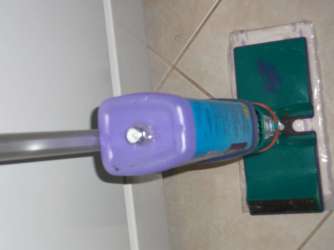1 Cup sugar
Bring to boil until sugar dissolves then cool. You can add red food coloring if you want then fill feeder when water has cooled.



![]() Wrinkle Release Spray or Fabreeze:
Wrinkle Release Spray or Fabreeze:
How to use:
1. Place garment on hanger or flat surface
and spray from 6-8 inches away.
2. Smooth away wrinkles with your hand.
3. Hang until dry or tumble in dryer for 2
minutes for quick drying.
Recipe:
Fill a spray bottle half way with fabric softner, then rest with water, spray garmet, hang up and a couple tugs and wrinkles out. I just use the cheapest softner at dollar store.
Fabric Softner
Instead of fabric softener, add a 1/2 cup of white vinegar to the rinse cycle for softening clothes the natural way.
Homemade Spray Starch
Boil 1 Cup of water (I used my tea kettle)
Mix 1tsp of Corn Starch with a little water (about 1/8 of a cup)
In a bowl mix the hot water and corn starch mixture together whisking constantly. Let cool and pour into a spray bottle that has mist setting on it. Empty body spray bottles works good. Use as you would regular spray starch. The spray starch only lasts a few days so throw out leftover after a couple of days.
How to Starch With Sta-Flo Concentrated Liquid Starch
Read more: How to Starch With Sta-Flo Concentrated Liquid Starch | eHow.com http://www.ehow.com/how_8467720_starch-staflo-concentrated-liquid-starch.html#ixzz24LCbINdm
Remove the spray gun top of the spray bottle and set it aside.
Fill the spray bottle half-way with Sta-Flo liquid starch. Add water to the bottle and fill the bottle the rest of the way up. If you aren’t comfortable with eyeing the measurements, add 1 cup Stay-Flo liquid starch and 1 cup water to the spray bottle.
Put the spray gun top back onto the spray bottle and screw it on tight. Shake the bottle to mix the starch concentrate with the water.
Spray an even layer of the watered down starch concentrate onto a garment or fabric craft. Spray on enough starch to make the liquid fully soak the fabric. Set the wet starched fabric down onto the ironing board and press it flat with a hot iron.
Read more: How to Starch With Sta-Flo Concentrated Liquid Starch | eHow.com http://www.ehow.com/how_8467720_starch-staflo-concentrated-liquid-starch.html#ixzz24LCsTaeW
I‘ve completely eliminated the need for dryer sheets. I was a firm lover of these until I found that I could take aluminum foil, ball it up, and toss it in the dryer with the wet laundry. It removes static and never has to be changed. I’ve been using the same aluminum foil ball for over 6 months. This tip came from the following website.
http://www.apartmenttherapy.com/comment-of-the-day-aluminum-fo-1-116049
Make More Heat
To make ironing easier and more energy efficient, add a piece of aluminum foil under your ironing board cover . The foil will help hold heat and allow you to iron more quickly or on a lower temperature.
Line-drying your clothes can save you about $85 a year
Bleach Alternative: Add a half cup of lemon juice to the rinse cycle of a medium load of whites, according to Annie B. Bond’s Home Enlightenment. Or, try a half cup of Borax.
Fabric Softeners: Add a quarter cup of baking soda to the wash cycle, Greene recommends.
Color Brightener: Toss a capful of vinegar in with the detergent, writes Michael DeJong, author of Clean: The Humble Art of Zen-Cleansing.
Static Cling: To fight static cling, a quarter cup of white vinegar in the washer should help, Greene says.
Fabric Refresher: In between washes, freshen your clothing with a spritz of dilute vodka. The smell will dissipate, green living expert Brian Clark Howard says, and your clothes will be ready for another day out.

http://www.instructables.com/id/Swiffer-bottle-hack/
NOT my picture.

Quick and simple.
Drill a 5/16″ hole in the top (when upside down) of the bottle.
Hot glue a 5/16″ nut around the hole you just drilled.
Once cool, insert your 5/16″ bolt into the hole.
We refilled ours with half Mr. Clean, half water.
Enjoy.

WD-40 ~ Who knew!
I had a neighbor who bought a new pickup.
I got up very early one Sunday morning and saw that someone had spray painted red all around the sides of this beige truck (for some unknown reason).
I went over, woke him up, and told him the bad news.
He was very upset and was trying to figure out what to do….
probably nothing until Monday morning, since nothing was open.
Another neighbor came out and told him to get his WD-40 and clean it off.
It removed the unwanted paint beautifully and did not harm his paint job that was on the truck. I was impressed!
WD-40 who knew?
“Water Displacement #40”.
The product began from a search for a rust preventative solvent and degreaser to protect missile parts.
WD-40 was created in 1953, by three technicians at the San Diego Rocket Chemical Company.
Its name comes from the project that was to find a ‘Water Displacement’ Compound.
They were finally successful for a formulation, with their fortieth attempt, thus WD-40.
The ‘Convair Company’ bought it in bulk to protect their atlas missile parts.
Ken East (one of the original founders) says there is nothing in WD-40 that would hurt you.
When you read the ‘shower door’ part, try it.
It’s the first thing that has ever cleaned that spotty shower door.
If yours is plastic, it works just as well as on glass.
It’s a miracle!
Then try it on your stovetop.
It’s now shinier than it’s ever been.
You’ll be amazed.
WD-40 Uses:
1. Protects silver from tarnishing.
2. Removes road tar and grime from cars.
3. Cleans and lubricates guitar strings.
4. Gives floor that ‘just-waxed’ sheen without making them slippery.
5. Keeps the flies off of Cows, Horses, and other Farm Critters, as well. (Ya gotta love this one!!!)
6. Restores and cleans chalkboards.
7. Removes lipstick stains.
8. Loosens stubborn zippers.
9. Untangles jewelry chains.
10. Removes stains from stainless steel sinks.
11. Removes dirt and grime from the barbecue grill.
12. Keeps ceramic / terracotta garden pots from oxidizing.
13. Removes tomato stains from clothing.
14. Keeps glass shower doors free of water spots.
15. Camouflages scratches in ceramic and marble floors.
16. Keeps scissors working smoothly.
17. Lubricates noisy door hinges on both home and vehicles doors.
18. It removes that nasty tar and scuff marks from the kitchen flooring.
It doesn’t seem to harm the finish and you won’t have to scrub nearly as hard to get them off.
Just remember to open some windows if you have a lot of marks.
19. Remove those nasty Bug guts that will eat away the finish on your car if not removed quickly!
20. Gives a children’s playground gym slide a shine for a super fast slide.
21. Lubricates gearshift and mower deck lever for ease of handling on riding mowers…
22. Rids kids rocking chair and swings of squeaky noises.
23. Lubricates tracks in sticking home windows and makes them easier to open.
24. Spraying an umbrella stem makes it easier to open and close.
25. Restores and cleans padded leather dashboards in vehicles, as well as vinyl bumpers.
26. Restores and cleans roof racks on vehicles.
27. Lubricates and stops squeaks in electric fans.
28. Lubricates wheel sprockets on tricycles, wagons, and bicycles for easy handling.
29. Lubricates fan belts on washers and dryers and keeps them running smoothly.
30. Keeps rust from forming on saws and saw blades, and other tools.
31. Removes grease splatters from stovetops.
32. Keeps bathroom mirror from fogging.
33. Lubricates prosthetic limbs.
34. Keeps pigeons off the balcony (they hate the smell).
35. Removes all traces of duct tape.
36. Folks even spray it on their arms, hands, and knees to relieve arthritis pain.
37. Florida’s favorite use is: ‘cleans and removes love bugs from grills and bumpers.’
38. The favorite use in the state of New York, it protects the Statue of Liberty from the elements.
39. WD-40 attracts fish. Spray a little on live bait or lures and you will be catching the big one in no time. Also, it’s a lot cheaper than the chemical attractants that are made for just that purpose.
Keep in mind though, using some chemical laced baits or lures for fishing are not allowed in some states.
40. Use it for fire ant bites. It takes the sting away immediately and stops the itch.
41. It is great for removing crayon from walls. Spray it on the marks and wipe with a clean rag.
42. Also, if you’ve discovered that your teenage daughter has washed and dried a tube of lipstick with a load of laundry, saturate the lipstick spots with WD-40 and rewash. Presto! The lipstick is gone!
43. If you spray it inside a wet distributor cap, it will displace the moisture, allowing the engine to start.
P.S.
As for that Basic, Main Ingredient…….
Well…. it’s FISH OIL….
Now This Is Definitely Worth SHARING!!
1 tablespoon salt
1 tablespoon baking soda
1 tablespoon dish detergent
1 cup water
1 piece aluminum foil
Directions:
1. Heat water in the microwave for 1 or 2 minutes.
2. Cut a piece of aluminum foil that roughly covers the bottom of a small bowl (like a cereal bowl).
3. Pour hot water into bowl. Place salt, soda, and dishwashing liquid into bowl. Place jewelry on top of foil and let it sit for 5 to 10 minutes. Rinse jewelry in cool water and dry jewelry completely with soft cloth. Discard solution after use and make a new batch next time.
4. According to wire-sculpture.com, “this works well for gold-filled, brass, german (nickel) silver, and sterling silver. I have even cleaned jewelry with freshwater pearls, shell cameos and mother of pearl with no problem.”.*
*I personally have not tried this. It came from an email from a friend.
Use Borax throughout the house, sprinkle it on the carpets and let sit for a few hours, then vacuum. This should kill all the fleas and ticks in your home and on your pets.